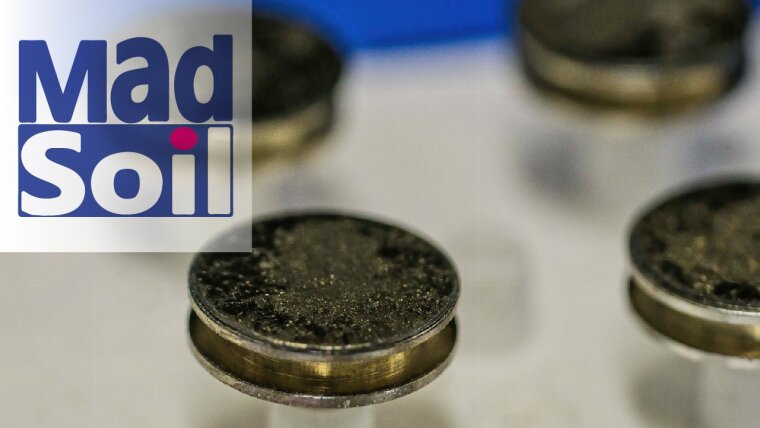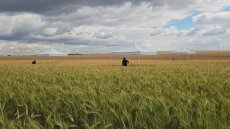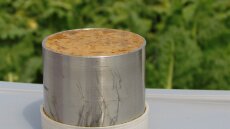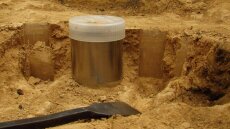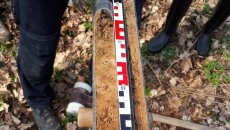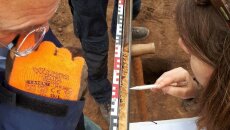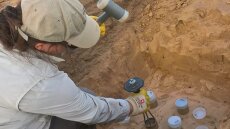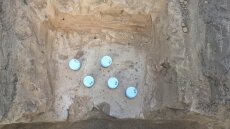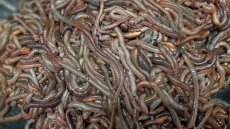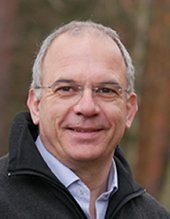Inaugural-Paper
Totsche K.U., Amelung W., Gerzabek M.H., Guggenberger G., Klumpp E., Knief C., Lehndorff E., Mikutta R., Peth S., Prechtel A., Ray N., Kögel-Knabner I. (2018) Microaggregates in soils. Journal of Plant Nutrition and Soil Science 181(1), 104-136. DOI: https://doi.org/10.1002/jpln.201600451External link
Totsche, K.U., Ray, N. and Kögel-Knabner, I. (2024), Structure–function co-evolution during pedogenesis—Microaggregate development and turnover in soils. J. Plant Nutr. Soil Sci., 187: 5-16. https://doi.org/10.1002/jpln.202400012External link
2024
Amelung, W., Tang, N., Siebers, N., Aehnelt, M., Eusterhues, K., Felde, V. J. M. N. L., Guggenberger, G., Kaiser, K., Kögel-Knabner, I., Klumpp, E., Knief, C., Kruse, J., Lehndorff, E., Mikutta, R., Peth, S., Ray, N., Prechtel, A., Ritschel, T., Schweizer, S. A., Woche, S. K., Wu, B., Totsche, K. U. (2024). Architecture of soil microaggregates: Advanced methodologies to explore properties and functions. Journal of Plant Nutrition and Soil Science, 187, 17–50. https://doi.org/10.1002/jpln.202300149External link
Bucka, F. B., Felde, V. J. M. N. L., Peth, S., Kögel-Knabner, I. (2024). Complementary effects of sorption and biochemical processing of dissolved organic matter for emerging structure formation controlled by soil texture. Journal of Plant Nutrition and Soil Science, 187, 51–62. https://doi.org/10.1002/jpln.202200391External link
Dultz, S., Speth, M., Klaus, K., Mikutta, R. & Guggenberger, G. (2024). Size, shape, and stability of organic particles formed during freeze–thaw cycles: Model experiments with tannic acid. – Journal of Colloid and Interface Science, 667: 563-574. https://doi.org/10.1016/j.clay.2020.105845External link
Guhra, T., Wonneberger, A., Stolze, K., Ritschel, T., Totsche, K. U. (2024). The functional role of earthworm mucus during aggregation. Journal of Plant Nutrition and Soil Science, 187, 63–76. https://doi.org/10.1002/jpln.202300100External link
Meyer, N., Kaldun, J., Rodionov, A., Amelung, W., & Lehndorff, E. (2024). Turnover of soil microaggregate-protected carbon and the challenge of microscale analyses. Journal of Plant Nutrition and Soil Science, 187, 143–152. https://doi.org/10.1002/jpln.202300154External link
Roosch, S., Felde, V. J. M. N. L., Uteau, D., Peth, S. (2024). Exploring the mechanisms of diverging mechanical and water stability in macro-and microaggregates. Journal of Plant Nutrition and Soil Science, 187, 104–117. https://doi.org/10.1002/jpln.202300245External link
Schweizer, S. A., Aehnelt, M., Bucka, F., Totsche, K. U., Kögel-Knabner, I. (2024). Impact of bare fallow management on soil carbon storage and aggregates across a rock fragment gradient. Journal of Plant Nutrition and Soil Science, 187, 118–129. https://doi.org/10.1002/jpln.202300156External link
Siebers, N., Voggenreiter, E., Joshi, P., Rethemeyer, J., & Wang, L. (2024). Synergistic relationships between the age of soil organic matter, Fe speciation, and aggregate stability in an arable Luvisol. Journal of Plant Nutrition and Soil Science, 187, 77–88. https://doi.org/10.1002/jpln.202300020External link
Tang, N., Dultz, S., Gerth, D., & Klumpp, E. (2024). Soil colloids as binding agents in the formation of soil microaggregates in wet-dry cycles: A case study for arable Luvisols under different management. Geoderma, 443, 116830. https://doi.org/10.1016/j.geoderma.2024.116830External link
Totsche, K. U., Ray, N., & Kögel‐Knabner, I. (2024). Structure–function co‐evolution during pedogenesis—Microaggregate development and turnover in soils. Journal of Plant Nutrition and Soil Science, 187(1), 5-16. https://doi.org/10.1002/jpln.202400012External link
Zech, S., Prechtel, A., Ray, N. (2024). Coupling scales in process-based soil organic carbon modeling including dynamic aggregation.Journal of Plant Nutrition and Soil Science,187,130–142. https://doi.org/10.1002/jpln.202300080External link
Yao, T., Bucka, F., Kögel-Knabner, I., Knief, C. (2024). Organic matter type and soil texture shape prokaryotic communities during early-stage soil structure formation. Journal of Plant Nutrition and Soil Science, 187, 89–103. https://doi.org/10.1002/jpln.202300142External link
2023
Amelung, W., Meyer, N., Rodionov, A., Knief, C., Aehnelt, M., Bauke, S. L., Biesgen, D., Dultz, S., Guggenberger, G., Jaber, M., Klumpp, E., Kögel-Knabner, I., Nischwitz, V., Schweizer, S. A., Wu, B., Totsche, K. U., Lehndorff, E. (2023). Process sequence of soil aggregate formation disentangled through multi-isotope labelling. - Geoderma, 429: 116226.
https://doi.org/10.1016/j.geoderma.2022.116226External link
Ritschel, T., Totsche, K. U., (2023). Reductive transformation of birnessite by low-molecular-weight organic acids. - Chemosphere, 325: 138414, https://doi.org/10.1016/j.chemosphere.2023.138414External link
Ritschel, T., Aehnelt, M., Totsche, K.U., (2023). Organic matter governs weathering rates and microstructure evolution during early pedogenesis. - Geoderma, 429: 116269, https://doi.org/10.1016/j.geoderma.2022.116269External link
2022
Guhra, T., Stolze, K. and Totsche, K. U. (2022). Pathways of biogenically excreted organic matter into soil aggregates. - Soil Biology and Biochemistry, 164: 108483. https://doi.org/10.1016/j.soilbio.2021.108483External link
Schweizer, S. A. (2022). Perspectives from the Fritz-Scheffer Awardee 2021: Soil organic matter storage and functions determined by patchy and piled-up arrangements at the microscale. - Journal of Plant Nutrition and Soil Science, 185(6): 694–706. https://doi.org/10.1002/jpln.202200217External link
Stolze, K., Barnes, A. D., Eisenhauer, N., & Totsche, K. U. (2022). Depth-differentiated, multivariate control of biopore number under different land-use practices. - Geoderma, 418: 115852. https://doi.org/10.1016/j.geoderma.2022.115852External link
Tang, N., Siebers, N., Leinweber, P., Eckhardt, K. U., Dultz, S., Nischwitz, V., & Klumpp, E. (2022). Implications of free and occluded fine colloids for organic matter preservation in arable soils. - Environmental Science & Technology, 56(19): 14133–14145. https://doi.org/10.1021/acs.est.2c01973External link
Zech, S., Ritschel, T., Ray, N., Totsche, K. U., Prechtel, A. (2022). How water connectivity and substrate supply shape the turnover of organic matter - Insights from simulations at the scale of microaggregates. - Geoderma, 405: 115394. doi: 10.1016/j.geoderma.2021.115394External link
Zech, S., Schweizer, S. A., Bucka, F. B., Ray, N., Kögel-Knabner, I., & Prechtel,
A. (2022). Explicit spatial modeling at the pore scale unravels the interplay of soil organic carbon storage and structure dynamics. - Global Change Biology, 28(15): 4589–4604. https://doi.org/10.1111/gcb.16230External link
2021
Bucka, B.F.; Felde, V.J.M.N.L.; Peth, S.; Kögel-Knabner, I. (2021): Disentangling the effects of OM quaility and soil texture on microbially mediated structure formation in artificial model soils. - Geoderma, 403: 115213. https://doi.org/10.1016/j.geoderma.2021.115213External link
Bucka, B.F; Pihlap, E.; Kaiser, J.; Baumgartl, T.; Kögel-Knabner, I. (2021): A small scale test for rapid assesment of the soil development potential in post-mining soils. - Soil & Tillage Research, 211: 105016. https://doi.org/10.1016/j.still.2021.105016External link
Dultz, S., Mikutta, R., Kara, S. N., Woche, S. K., & Guggenberger, G. (2021). Effects of solution chemistry on conformation of self-aggregated tannic acid revealed by laser light scattering. - Science of The Total Environment, 754, 142119. https://doi.org/10.1016/j.scitotenv.2020.142119External link
Felde, V. J. M. N. L., Schweizer, S. A., Biesgen, D., Ulbrich, A., Uteau, D., Knief, C., Graf-Rosenfellner, M., Kögel-Knabner, I., & Peth, S. (2021). Wet sieving versus dry crushing: Soil microaggregates reveal different physical structure, bacterial diversity and organic matter composition in a clay gradient. - European Journal of Soil Science, 72(2): 810–828. https://doi.org/10.1111/ejss.13014External link
Guhra, T.; Ritschel, T.; Totsche, K.U. (2021): The mechanisms of gravity-constrained aggregation in natural colloidal suspensions. - Journal of Colloid and Interface Science, 597: 126-136. https://doi.org/10.1016/j.jcis.2021.03.153External link
Kögel-Knabner, I.; Amelung, W. (2021): Soil organic matter in major pedogenic soil groups. - Georderma, 384, 114785. https://doi.org/10.1016/j.geoderma.2020.114785External link
Lehndorff, E.; Rodionov, A.; Plümer, L.; Rottmann, P.; Spiering, B.; Dultz, S.; Amelung, W. (2021): Spatial organization of soil microaggregates. - Georderma, 386: 114915. https://doi.org/10.1016/j.geoderma.2020.114915External link
Schweizer, S.A., Mueller, C.W., Höschen, C., Ivanov, P., Kögel-Knabner, I., 2021. The role of clay content and mineral surface area for soil organic carbon storage in an arable toposequence. - Biogeochemistry, 156(3): 401-420. https://doi.org/10.1007/s10533-021-00850-3External link
Sosa, M.V.; Lehndorff, E.; Rodionov, A.; Gocke, M.; Sandhage-Hofmann, A.; Amelung, W. (2021): Micro-scale resolution of carbon turnover in soil - Insights from laser ablation isotope ratio mass spectrometry on water-glass embedded aggregates. - Soil Biology and Biochemistry, 159: 108279. https://doi.org/10.1016/j.soilbio.2021.108279External link
2020
Biesgen, D.; Findte, K.; Maarastawi, S.; Knief, C. (2020): Clay content modulates differences in bacterial community structure in soil aggregates of different size. - Geoderma, 376: 114544. LinkExternal link
Guhra, T.; Stolze, K.; Schweizer, S.; Totsche, K. (2020): Earthworm mucus contributes to the formation of organo-mineral associations in soil. - Soil Biology and Biochemistry, 145: 10778. LinkExternal link
Ivanov, Pavel; Manucharova, N.; Nikolaeva, S.; Safonov, A.; Krupskaya, V.; Chernov, M.; Eusterhues, K.; Totsche, K.U. (2020): Glucose-stimulation of natural microbial activity changes composition, structure and engineering properties of sandy and loamy soils. - Engineering Geology, 265: 105381. LinkExternal link
Krause, L.; Klumpp, E.; Nofz, I.; Missong, A.; Amelung, W.; Siebers, N. (2020): Colloidal iron and organic carbon control soil aggregate formation and stability in arable Luvisols. - Geoderma, 374: 114421. LinkExternal link
Zech, S.; Dultz,S.; Guggenberger, G.; Prechtel A.; Ray, N. (2020): Microaggregation of goethite and illite evaluated by mechanistic modeling. - Applied Clay Science, 198: 105845. LinkExternal link
2019
Bucka, B.F.; Kölbl, A.; Uteau, D.; Peth, S.; Kögel-Knabner, I. (2019): Organic matter input determines structure development and aggregate formation in artificial soils. - Geoderma, 354: 113881. LinkExternal link
Dultz, S.; Woche, S.K.; Mikutta, R.; Schrapel, M.; Guggenberger, G. (2019): Size and charge constraints in microaggregation: Model experiments with mineral particle size fractions. - Applied Clay Science, 170: 29-40. LinkExternal link
Guhra, T.; Ritschel, T.; Totsche, K.U. (2019): Formation of mineral-mineral and organo-mineral composite building units from microaggregate‐forming materials including microbially produced extracellular polymeric substances. - European Journal of Soil Sciences, 70: 604-615. LinkExternal link
Krause, L.; Biesgen, D.; Treder, A.; Schweizer, A.S.; Klumpp, E., Knief, C.; Siebers, N. (2019): Initial microaggregate formation: Association of microorganisms to montmorillonite-goethite aggregates under wetting and drying cycles. - Geoderma, 351: 250-260. LinkExternal link
Ritschel, T.; Totsche, K.U. (2019): Modeling the formation of soil microaggregates. - Computers and Geosciences, 127: 36-43. LinkExternal link
Rodionov, A.; Lehndorf, E.; Stremtan, C.S.; Brand, W.A.; Königshoven, H-P., Amelung, W. (2019): Spatial Microanalysis of Natural 13C/12C Abundance in Environmental Samples Using Laser Ablation-Isotope Ratio Mass Spectrometry. - Analytical Chemistry, 91: 6225-6232. LinkExternal link
Rupp, A., Guhra, T., Meier, A., Prechtel, A., Ritschel, T., Ray, N., Totsche, K. U. (2019): Application of a Cellular Automaton Method to Model the Structure Formation in Soils Under Saturated Conditions: A Mechanistic Approach. - Front. Environ. Sci., 7:170. LinkExternal link
Schulz, R., Ray, N., Zech, S., Rupp, A., Knabner, P. (2019). Beyond Kozeny-Carman: Predicting the Permeability in Porous Media. - Transport in Porous Media, 130: 487-512. LinkExternal link
Schweizer, A.S.; Bucka, B.F.; Graf-Rosenfeller, M.; Kögel-Knabner, I. (2019): Soil microaggregate size composition and organic matter distribution as affected by clay content. - Geoderma, 355: 113901. LinkExternal link
2018
Dultz, S.; Steinke, H.; Mikutta, R.; Woche, S.K.; Guggenberger, G. (2018): Impact of organic matter types on surface charge and aggregation of goethite. - Colloids Surfaces, A554: 156-168.
Krause, L.; Rodionov, A.; Schweizer, S.A.; Siebers, N.; Lehndorff, E.; Klumpp, E.; Amelung, W. (2018): Microaggregate stability and storage of organic carbon is affected by clay content in arable Luvisols. - Soil & Tillage Research, 182: 123-129. LinkExternal link
Ray N.; Rupp A.; Schulz R.; Knabner P. (2018): Old and new approaches predicting the diffusion in porous media. - Transport in Porous Media, 124: 803 - 824.
Ritschel, T.; Schlüter, S.; Köhne, J.M.; Vogel, H.-J.; Totsche, K.U. (2018): Efficient prediction of multi-domain flow and transport in hierarchically structured porous media. - Water Resources Research, 54(11): 9033-9044. doi: 10.1029/2018WR022694
Rupp, A.; Knabner, P.; Dawson, C. (2018): A local discontinuous Galerkin scheme for Darcy flow with internal jumps. - Computational Geosciences, 22/4: 1149-1159.
Rupp, A.; Totsche, K.U.; Prechtel, A.; Ray, N. (2018). Discrete-continuum multiphase model for structure formation in soils including electrostatic effects. - Frontiers in Environmental Science, 6. LinkExternal link
Siebers; N.; Abdelrahman, H., Krause, L. ; Amelung, W. (2018): Bias in aggregate geometry and properties after disintegration and drying procedures. - Geoderma, 313: 163-171.
Schweizer, S.; Höschen, C.; Schlüter, S.; Kögel-Knabner, I. ; Mueller, C.W. (2018): Rapid soil formation after glacial retreat shaped by spatial patterns of organic matter accrual in microaggregates. - Global Change Biology, 24(4): 1637-1650. LinkExternal link
Totsche, K.U.; Amelung, W.; Gerzabek, M.H.; Guggenberger; G.; Klumpp, E.; Knief, C., Lehndorff, E., Mikutta, R.; Peth, S; Prechtel, A.; Ray, N.; Kögel-Knabner, I. (2018.): Microaggregates in soils. - Journal of Plant Nutrition and Soil Science, 181(1): 104-136. LinkExternal link
2017
Ray, N.; Rupp, A.; Prechtel, A. (2017): Discrete-continuum multiscale model for transport, biomass development and solid restructuring in porous media - Advances in Water Resources, 107: 393-404. LinkExternal link
Steffens, M.; Rogge, D.M.; Mueller, C.W.; Höschen, C. ; Lugmeier, J., Kölbl, A.; Kögel-Knabner, I. (2017): Identification of distinct functional microstructural domains controlling C Storage in Soil. - Environonmental Science & Technology, 51/21: 12182-12189. LinkExternal link
